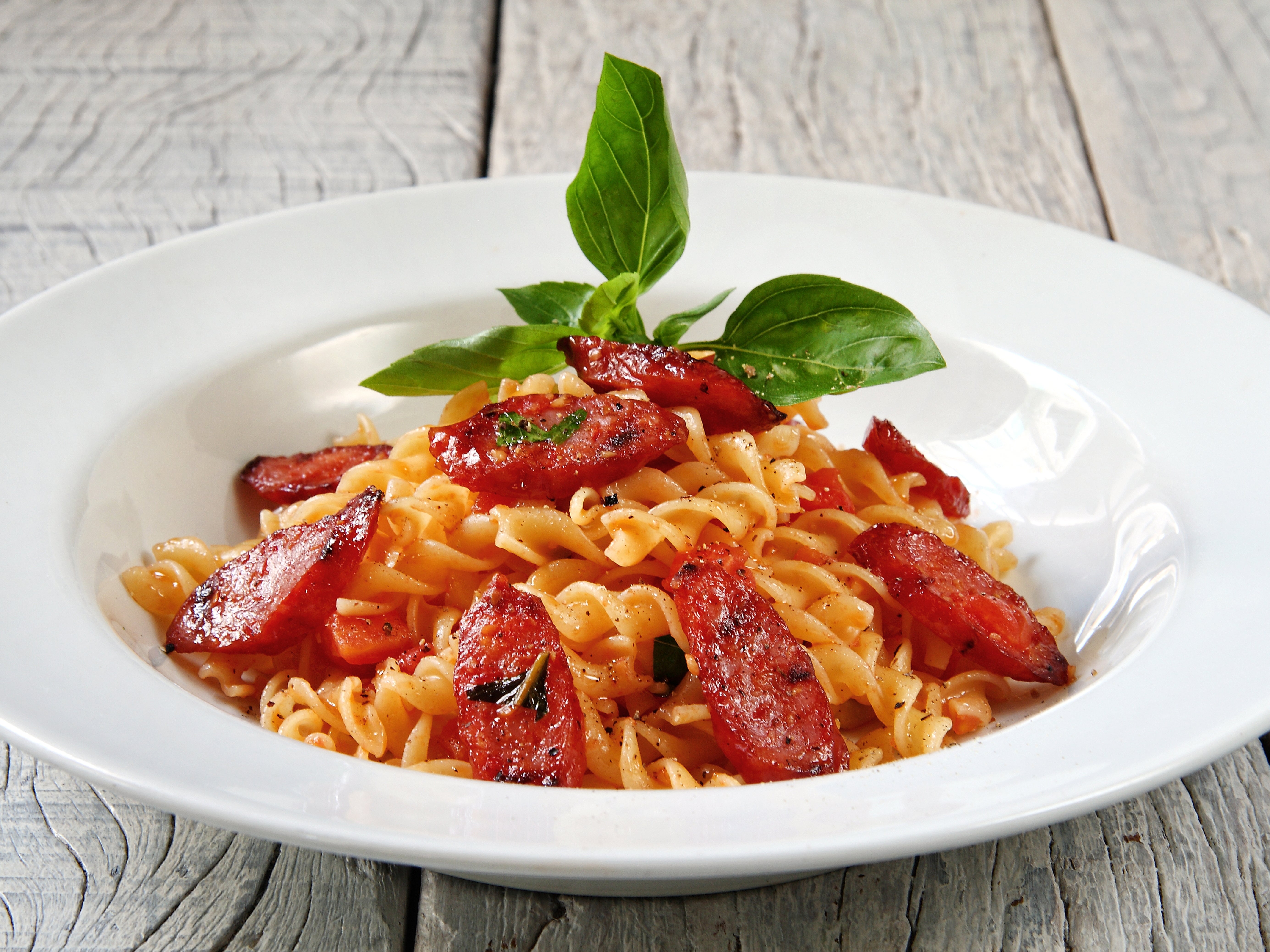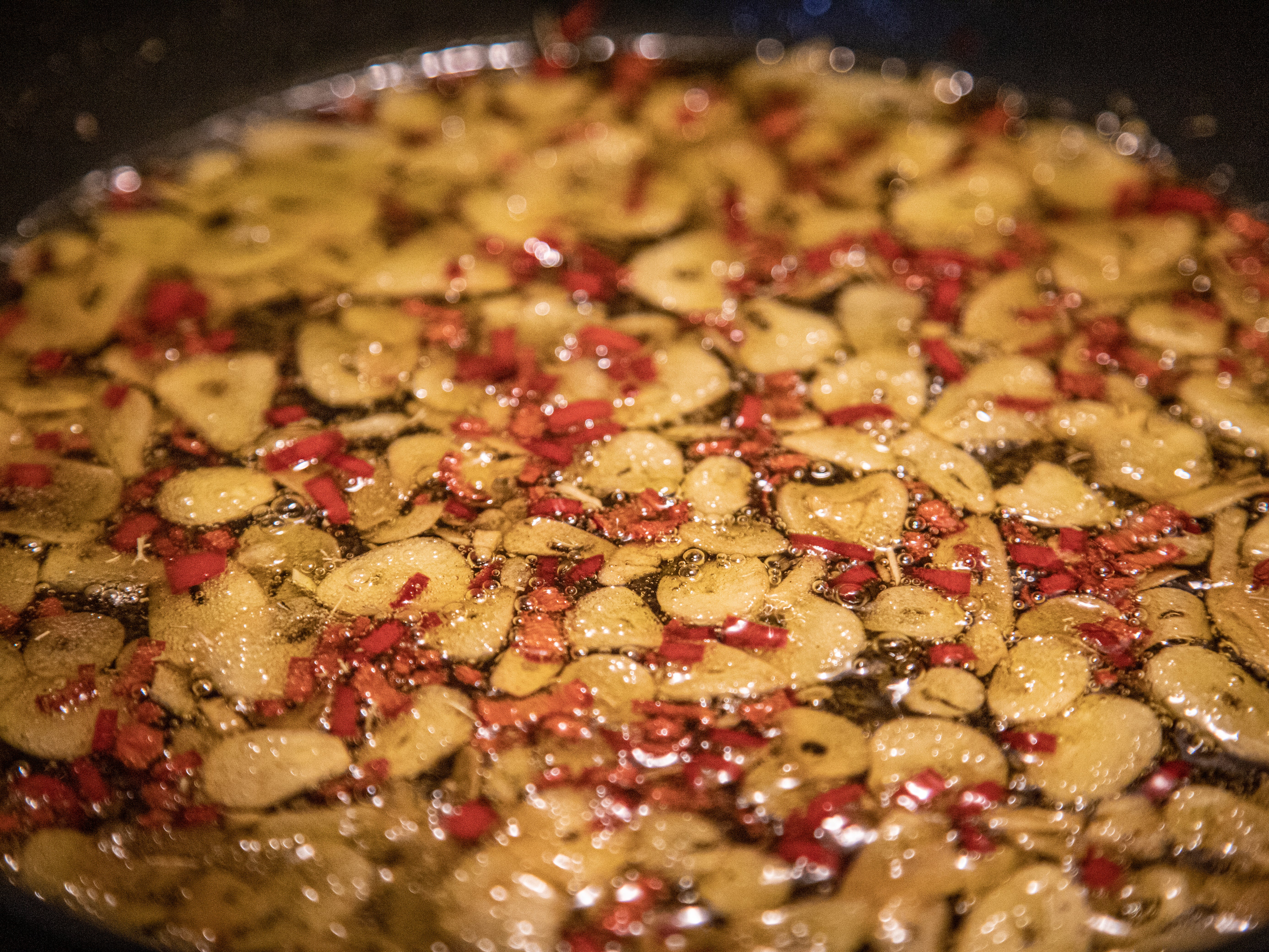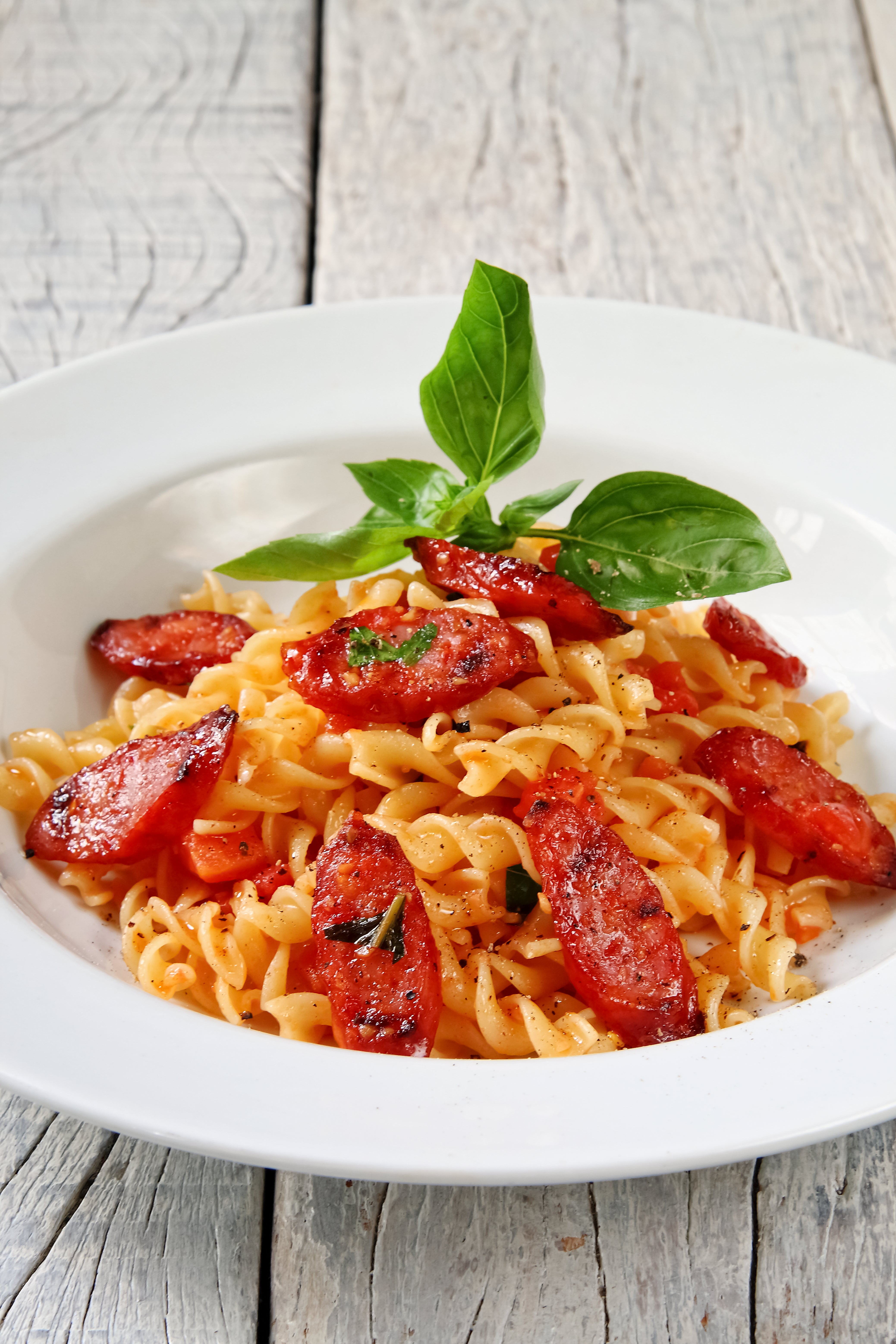Aglio e olio is the best pasta dish for pimping
Adding fried pepperoni to this classic recipe gives it a bacon-like brawniness and a chilli kick, says Melissa Clark

Your support helps us to tell the story
From reproductive rights to climate change to Big Tech, The Independent is on the ground when the story is developing. Whether it's investigating the financials of Elon Musk's pro-Trump PAC or producing our latest documentary, 'The A Word', which shines a light on the American women fighting for reproductive rights, we know how important it is to parse out the facts from the messaging.
At such a critical moment in US history, we need reporters on the ground. Your donation allows us to keep sending journalists to speak to both sides of the story.
The Independent is trusted by Americans across the entire political spectrum. And unlike many other quality news outlets, we choose not to lock Americans out of our reporting and analysis with paywalls. We believe quality journalism should be available to everyone, paid for by those who can afford it.
Your support makes all the difference.As much as I adore long-simmered pasta sauces like bolognese or Marcella Hazan’s butter-slicked tomatoes, the ones I gravitate to most can be sautéed in a frying pan while the pasta boils in a pot alongside.
Variations on a classic aglio e olio, these sauces are invariably anchored by loads of olive oil and garlic, then perked up with a pinch of red-pepper flakes and handful of parsley (and maybe an anchovy or six). They’re thoroughly satisfying meals that take exactly three minutes longer to put together than for the pasta to cook.
Sometimes, though, the urge to embellish pulls hard, especially when there are cured pork products in the house.
Slivers of spicy salami or pepperoni, fried in oil along with the garlic, render their fat and turn irresistibly crisp. The pieces are a little like bacon, but instead of a smoky flavour, they add a chilli kick along with their brawny character.

In this version, I went a few steps further and added tomato paste, fennel seeds and lemon to the pan. These elements build on one another, with the tomato rounding out the licorice note of the fennel and softening the acid from the lemon. But it’s a mix that takes well to tweaking.
The fennel seed can be the first to go if you’re not a licorice fan. You could substitute cracked coriander seeds or a lesser amount of black pepper, or just skip the spice entirely. And feel free to add the lemon to taste. You might like a lot less of it than I do.
I like to use shells or orecchiette pasta here so the curved cups can capture the nuggets of pepperoni. But any short, textured pasta with nooks and crannies would work just as well. You can even use long pasta like bucatini or spaghetti if that’s what’s on hand, though you might want to chop the pepperoni a little more finely so it can cling on to the strands.
In any case, make sure not to overcook the pasta; it should have a firm spine when added to the pan. Then, toss everything well so the pepperoni can’t hide at the bottom of the pan. If it does, just spoon it on top of the pasta as you serve. Those savory, crunchy bits are the star of this simple, adaptable dish.
Pepperoni pasta with lemon and garlic

Bits of chopped pepperoni crisp up almost like bacon when fried, with curled, browned edges and a savoury, spicy bite. Here, they’re the foundation of a hearty pasta sauce that’s supremely satisfying and fast enough for a weeknight. Lemon, garlic and fennel seeds round out the flavours, and fresh herbs lend brightness. Taste the pepperoni before adding the optional red-pepper flakes. Depending on the brand of sausage, you might not need the extra kick. And if you don’t have pepperoni on hand, any kind of salami will work.
Makes: 4
Total time: 25 minutes
Ingredients:
Salt
450g medium pasta shells or orecchiette
1 tbsp extra-virgin olive oil, plus more as needed
170g pepperoni, thinly sliced, then coarsely chopped
3 garlic cloves, thinly sliced
1 tsp fennel seeds, cracked with a mortar and pestle or the side of a chef’s knife
Pinch of red-pepper flakes (optional)
1 tbsp tomato paste
1 small lemon, zested (if your lemon is very large, just zest half of it)
15g torn fresh basil or parsley leaves and tender stems, plus more for garnish
Grated parmesan, for serving (optional)
Method:
1. Bring a large pot of well-salted water to a boil. Add pasta and cook, according to package directions, until about 2 minutes shy of al dente so that the pasta can finish cooking in the sauce. Reserve 1 cup of the pasta cooking water, then drain the pasta.
2. While the pasta is cooking, in a large frying pan or casserole dish, heat oil over medium. Add pepperoni and cook, stirring occasionally, until crisped and brown, 3 to 4 minutes.
3. If the pan looks dry, drizzle in a little more oil. Add garlic, fennel seeds, red-pepper flakes (if using) and a large pinch of salt, and cook until garlic is lightly golden, 2 to 3 minutes. Add tomato paste and cook until it darkens, about 1 minute.
4. Add the drained pasta, lemon zest and ¾ cup of the reserved pasta water to the pan. Stir until the pasta is al dente and well coated with the sauce. Add more pasta water, if needed, until the sauce is glossy and the pasta is cooked to taste.
5. Cut the zested lemon in half and squeeze some juice into the pasta. Stir in herbs and taste, adding more lemon juice and salt, if needed. Cut the remaining half lemon into wedges and serve it alongside the pasta, which should be garnished with more herbs and a drizzle of oil, and sprinkled with parmesan, if you like.
And to drink...
Pepperoni may not seem like the friendliest ingredient to pair with white wines, but the other important ingredients in this dish – lemon, garlic, fennel seeds – absolutely suggest a white, and the spiciness of the pepperoni reinforces that notion. More specifically, lively, high-acid Italian whites will go well with this dish, whether Orvieto from Umbria, vermentino from Liguria, Gavi from Piedmont, Fiano di Avellino or Verdicchio di Matelica. You could easily reach beyond Italy. A lightly sweet German kabinett riesling might be delicious. If you wanted a red, look also for high-acid, low-tannin possibilities, like an easygoing Barbera d’Alba, an inexpensive Chianti, a teroldego from Trentino or a frappato from Sicily. You could also try a dry, earthy Lambrusco if the mood for bubbles strikes.
Pairings by Eric Asimov.
© The New York Times
Join our commenting forum
Join thought-provoking conversations, follow other Independent readers and see their replies
Comments